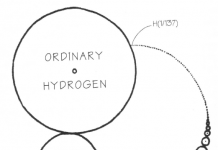We appreciate AltEnergyStocks.com’s coverage of the CSP industry with its recent article, The Future Shape of CSP. Unfortunately, the article fails to recognize that compact linear Fresnel reflector (CLFR) companies like Ausra are making tremendous progress in advancing the technology and creating new and diverse market segments for CSP.
CLFR will continue to play a major role in helping advance the CSP market. The following are just a few of the benefit’s of Ausra’s next-generation CLFR solar thermal energy systems:
· Simple, robust design for low-cost and durability
· Most land-efficient solar technology (highest energy density)
· Standard, common materials: carbon steel pipe and structural components, flat glass
· Direct steam generation (150°C/300°F to 400°C/750°F) without heat transfer fluids, such as synthetic oils, thereby reducing expense and environmental risks
· Rapid deployment and modular installation: high-volume, automated production (6-to-18 month field installation); regional and on-site manufacturing
· Durable structure: 2-inch carbon steel pipe; horizontal mount solid piping; no moving joints; steel-backed reflectors rotate downward to protect the mirrored surface
· Flexible steam generator flow: once-through or recirculating
· Highly-automated computer controlled tracking
In addition to the technical benefits of our CLFR systems, we continue to enjoy strong financial support from our investors, particularly through our most recent $25.5 million equity financing facility. We look forward to continuing our dialogue with AltEnergyStocks.com about our CLFR technology as we expand and accelerate our solar thermal energy equipment supply business.
William M. Conlon, P.E., Ph.D.
Vice President, Engineering
Ausra, Inc.




The problem right now is natural gas is absurdly cheap, and it will be difficult to compete with natural gas at these prices for process steam. The investment tax credit should lower the cost a lot though – is the ITC available for process steam CLFR as well?
Very likely, natural gas prices are headed up again, but the volatility in natural gas markets is a mixed blessing for CLFR. One the one hand, it will impede investments in alternative energy, on the other hand it could actually increase investment in alternative energy as a strategy to cope with natural gas price uncertainty.
What other niches are interesting for CLFR? Remote steam delivery for oil processing?
Cyril,
I sent this on to Bill Conlon to see if he wanteed to respond. From talking to them, Ausra seems most excited about delivering heat to existing fossil fueled plants, such as the one they already have in Australia.
My main skepticism is that commercial process heat will be very difficult to sell, because no factory will want to shut down when the sun isn’t shining, and Ausra does not currently have thermal storage technology. That means commercial installations will have to be backed up with gas.
In our interview, he was excited about businesses that needed additional heat but could not get additional air permits, but I’m not sure how this would work with regard to the timing problem refered to above.
That’s why I said they have to compete with natural gas. If they can get the tax credits they should do fine, but unsubsidized they would have trouble competing against sub $4/GJ natural gas spot prices.
Of course natural gas prices are likely to go up. And there may be an important niche in remote process heat demands which can have difficulties with getting natural gas delivered. But they need those tax credits, I’m not sure if they apply to solar thermal process steam (nobody else is doing that, right?)
There are several other companies doing solar process heat, the most prominent of which is Sopogy (http://www.sopogy.com/)
At lower temperatures, evacuated tube solar collectors may be enough, to acheive higher temperatures, there are several CSP solutions, which all claim to be cheapest.
Yes, CSP has to compete against narural gas, but outside the utility market, most companies apply a very high discount rate (they often want a 3 year payback.) This makes it difficult to compete with NG at any price.